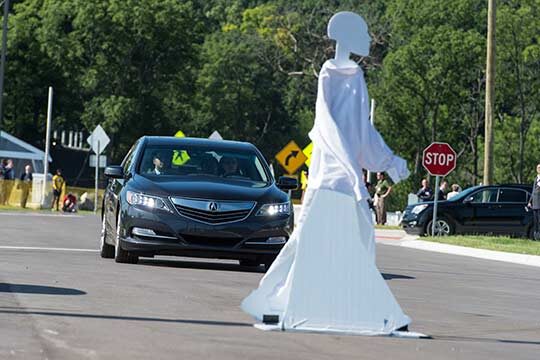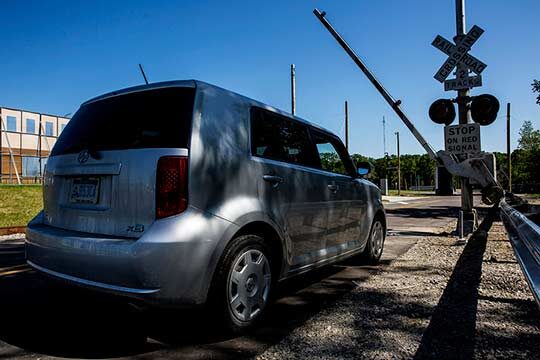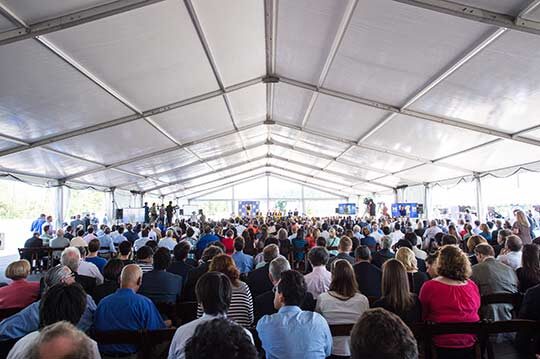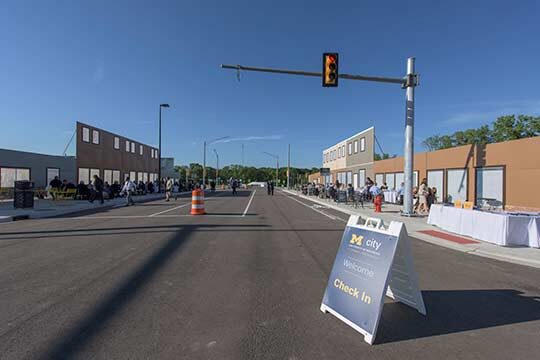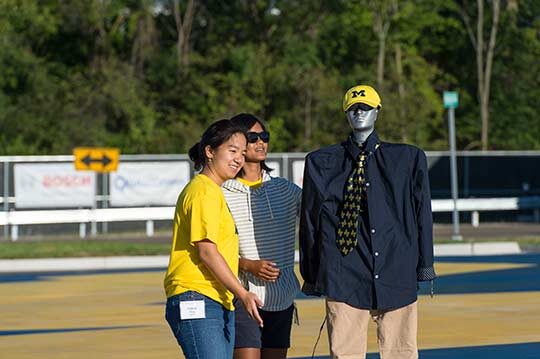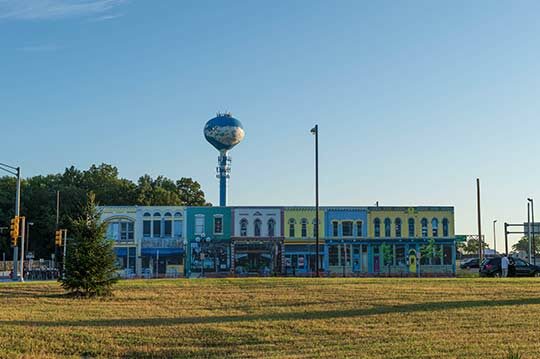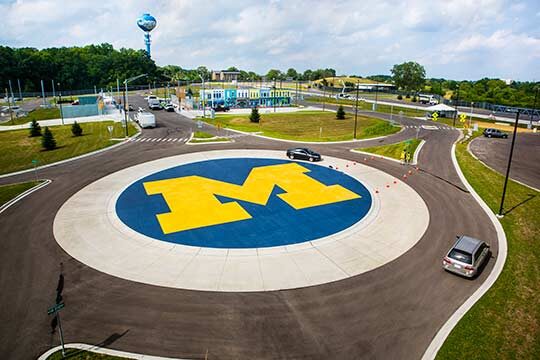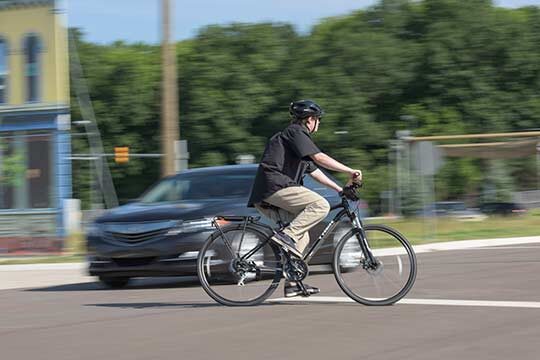(Smart) car and driver
Sit back and enjoy the ride through Mcity, the world’s first controlled environment to test connected and automated vehicle technologies. The site, located at U-M’s North Campus, officially opened in mid-July. Read more.
-
Walk on the wild side
Mcity is a 32-acre simulated urban and suburban environment that includes a network of roads with intersections, traffic signs and signals, streetlights, building facades, sidewalks, and construction obstacles. It is designed to support rigorous, repeatable testing of new technologies before they are tried out on public streets and highways. (Image: Michigan Photography.)
-
On the outside looking in
Mcity was designed and developed by U-M’s interdisciplinary Mobility Transportation Center (MTC), in partnership with the Michigan Department of Transportation (MDOT). MTC is a public-private partnership among industry, government, and academia. A key MTC goal is to put a shared network of connected, automated (including driverless) vehicles on the road in Ann Arbor by 2021. (Image: U-M College of Engineering.)
-
Train kept a-rollin’
The types of technologies that will be tested at the facility include connected technologies – vehicles talking to other vehicles or to the infrastructure, commonly known as V2V or V2I – and various levels of automation all the way up to fully autonomous, or driverless vehicles. (Image: U-M College of Engineering.)
-
Wide open spaces
MTC and the U-M Transportation Research Institute are working to deploy more than 30,000 connected and automated vehicles in Ann Arbor and Southeast Michigan over the next several years. Partners include several industry leaders as well as the Michigan Department of Transportation and the Michigan Economic Development Corporation.
-
Get outta my dreams, get into my car
MTC partners include automakers and top-tier auto suppliers, as well as traffic signal and traffic sensing companies, insurance providers, telecommunications, big data, IT, and more. MTC also is working with federal, state, and city governments. Constituents turned out in huge numbers for the mid-July opening of the test site on North Campus. (Image: Michigan Photography.)
-
Just an illusion
About $10 million has been invested in Mcity to date, with funding coming from U-M and the Michigan Department of Transportation. Industry investors include leaders across the auto and technology sectors, among others. Leadership Circle companies (with investments of $1 million over three years) include Ford Motor Co., Toyota Motor Corp., and Qualcomm Technologies Inc., among others. See full list. (Image: Michigan Photography.)
-
Hitchhike
MTC brings together faculty and students from across U-M to explore the web of engineering, business, law, urban planning, policy, and social challenges that must be addressed. (Image: Michigan Photography.)
-
Maybe you know some little places to go to
A downtown facade simulates the real-world via sidewalks, crosswalks, ADA ramps, raised medians, street lights, signalized intersections, tree shading, parallel and diagonal parking, a bus stop, and more. (Image: Michigan Photography.)
-
Cover me
Real-world conditions are replicated across Mcity, including this tunnel, which is designed to block the automated and connected vehicles from satellite signals. The site also features freeway-like ramps, cable barriers, concrete barriers, guardrails, poles, and pedestrian crossings. (Image: Michigan Photography.)
-
I’ll be the roundabout
While fairly new to roadway networks, roundabouts are becoming increasingly common. Research shows they reduce fatalities and serious injuries in comparison to traditional signalized intersections. Mcity’s roundabout offers four different locations to enter and exit. There’s even a pedestrian crossing at one of the approaches. Let’s just hope these smart cars have a better handle on roundabouts than we “smart” drivers. (Image: U-M College of Engineering.)
-
Sign, sign, everywhere a sign
Mcity allows researchers to simulate the environments where connected and automated vehicles will be most challenged. Even seemingly minor details a vehicle might encounter in urban and suburban settings have been incorporated into Mcity, such as road signs defaced by graffiti and faded lane markings. (Image: U-M College of Engineering.)
-
Going mobile
“We believe that this transformation to connected and automated mobility will be a game changer for safety, for efficiency, for energy, and for accessibility,” says MTC Director Peter Sweatman. “Our cities will be much better to live in, our suburbs will be much better to live in. These technologies truly open the door to 21st century mobility.” (Image: Michigan Photography.)
-
Nothin’ but blue skies
“We put the world on wheels,” says Michigan Gov. Rick Snyder. “We transformed how the world moved. Michigan is uniquely positioned to continue to be a leader in mobility, and Mcity will play a critical role in that future.” (Image: Michigan Photography.)

